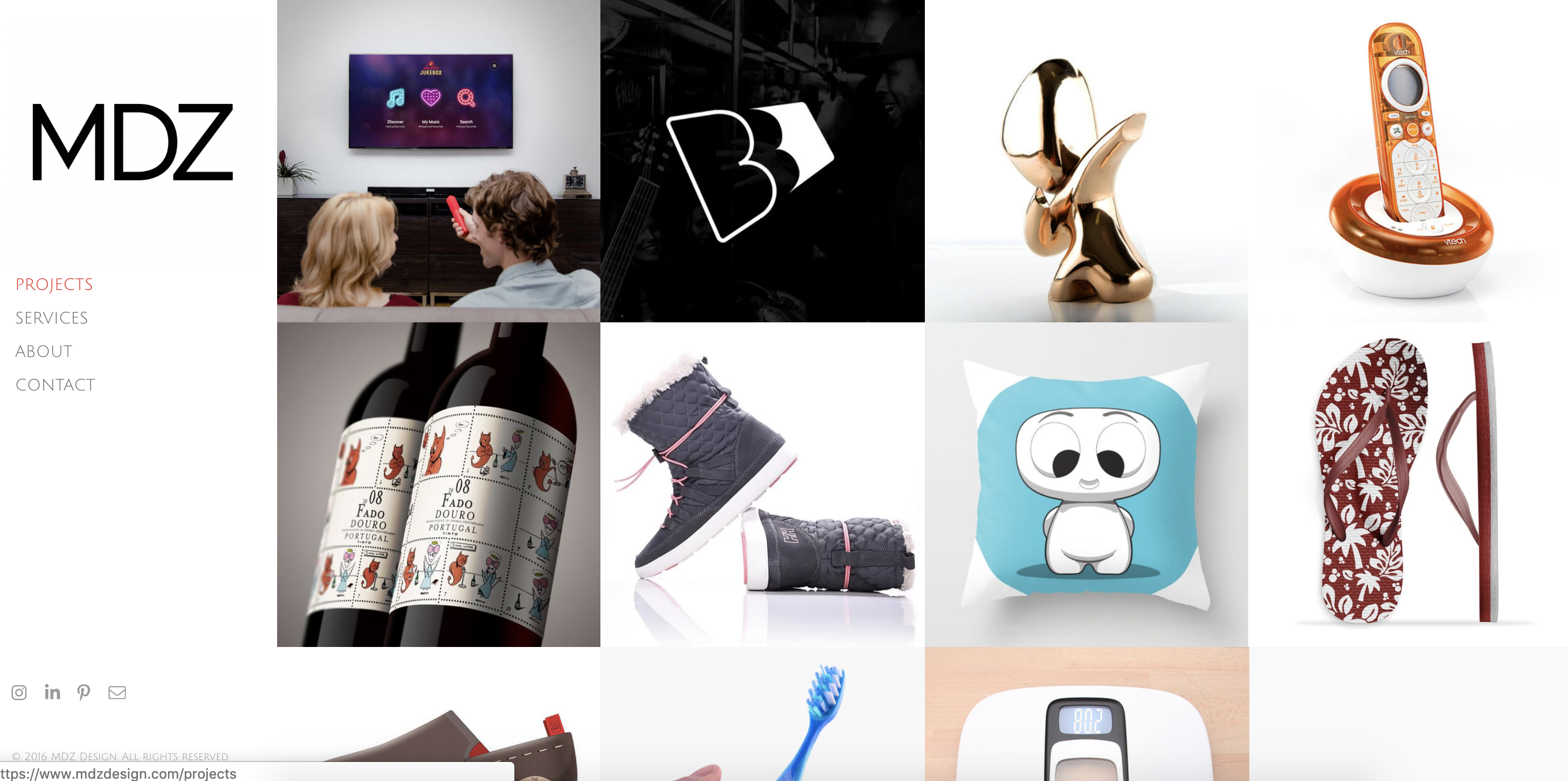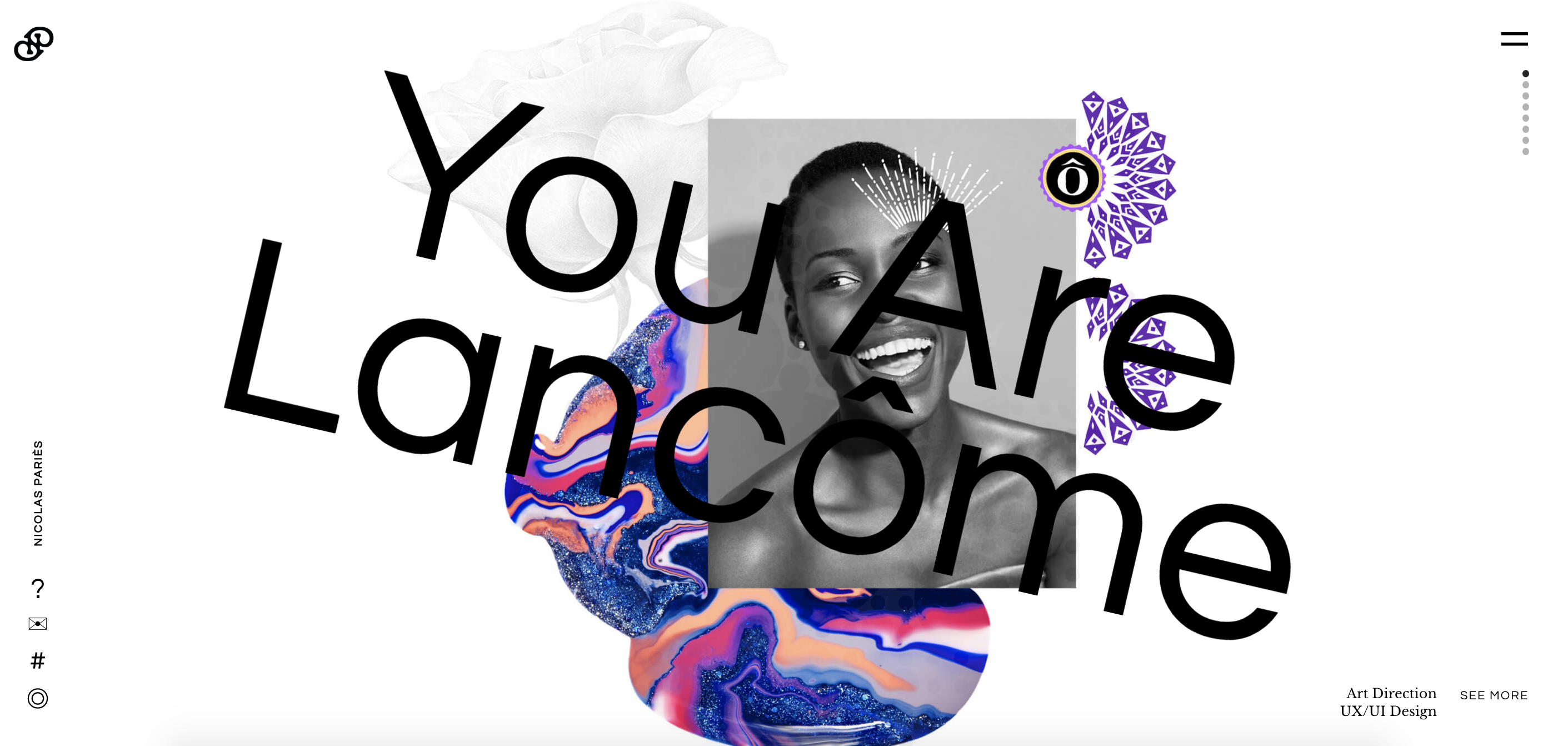Whether you're a full-time graphic designer or simply someone who's interested in dabbling in design as a side project in her free time, it's critical you create a sleek graphic design portfolio to showcase your work to potential clients.
A graphic design portfolio is typically the only element a client needs to see when choosing a graphic designer -- which means a portfolio is vital for proving your skill as a designer.
Additionally, a graphic design portfolio, much like a resume, provides necessary contact information, and any case studies you care to include from past employers.
Simply put, a graphic design portfolio can establish your legitimacy as a designer worth hiring.
With all that said, you're probably thinking -- gee, thanks, no pressure or anything.
Fortunately, we've cultivated a list of 12 impressive graphic design portfolios, followed by instructions on how you can create your own. Keep reading to get all the tips you need to curate the perfect space to showcase your work.
Graphic design portfolio website examples
- Heather Shaw
- MDZ Design
- Nicolas Paries
- Gleb Kuznetsov
- Chris Tammar
- Stefanie Brueckler
- Mingfei Yang
- Chip Kidd
- Kate Moross
- Brook Perryman
- Tobias van Schneider
- Ling K
1. Heather Shaw
2. MDZ Design


5. Chris Tammar
7. Mingfei Yang
8. Chip Kidd
9. Kate Moross
10. Brook Perryman
12. Ling K
How to make a graphic design portfolio
- Curate your best work, and show a wide breadth of skill.
- Choose the right platform to showcase your work.
- Include a professional case study, or client recommendations.
- Integrate your personality.
- Describe the creative process.
- Show non-client work, or side projects.
1. Curate your best work, and show a wide breadth of skill.
Lindsay Burke, a HubSpot Product Designer, emphasizes the importance of quality over quantity when it comes to curating a graphic design portfolio. She says, "I recommend selecting your strongest projects and making these the primary focus of your portfolio website."
Ideally, your portfolio will feature your sharpest, most impressive 10-20 designs -- undoubtedly, someone pursuing your portfolio won't have the time to look at more, and if your first couple projects are impressive enough, they shouldn't need to. However, it's equally critical you show potential clients your versatility. If you've dabbled in logo design as well as video animation, it's good to include both kinds of projects in your portfolio.
2. Choose the right platform to showcase your work.
Investing in a quality website with a custom domain URL will pay-off in the long run by demonstrating your professionalism to potential clients. Having your own website helps you organize your portfolio to suit all your business needs -- for instance, perhaps you'll include 'Projects', 'About Me', and 'Contact Me' sections, so visitors can peruse your content and then contact you without ever leaving the site.
Take a look at 7 of the Best Website Builders for 2019 if you need help choosing the best platform for your portfolio.
3. Include a professional case study, or client recommendations.
Lindsay Burke told me it's incredibly valuable to write out a case study to complement any website visuals -- "Through a written case study, your site visitors can get a sense of your project's background, the problem you were aiming to solve through design, and the process you took to arrive at a final deliverable. A lot of time, effort and iteration goes into design solutions, and a written case study will help communicate your unique process."
To cultivate a strong case study, consider including the background of the project, the problem, the process, your deliverable, and any next steps. In the process section of your case study, Burke suggests including research, experience mapping, persona development, wire-framing, sketching, usability testing, and iteration.
For further inspiration, check out one of the case studies Lindsay Burke uses for her personal website.
Additionally, it will impress future clients if you can include recommendations from prior employers, which allows you to demonstrate a level of professionalism.
4. Integrate your personality.
As the examples above indicate, each portfolio is drastically different depending on the artist's unique style. Someone checking out Tobias van Schneider's portfolio will expect something vastly different than someone looking at Ling K's site. Ensure your portfolio -- including layout, background, and website title -- reflect who you are as a designer.
5. Describe the creative process.
Each designer has a unique process when working with clients -- and the sooner a potential client can learn about your process, the better. It's important you include context, so visitors can get a sense for how you handle challenges, and how your designs solve real-world problems.
Plus, including a description of your creative process can help a potential client determine whether you're capable of handling the scope of their project. For instance, they might be unsure of your ability to handle graphic designs for mobile until they read how you single-handedly brainstormed and created the designs for another client's mobile site. In this case, context is critical.
6. Show non-client work, or side projects.
Amanda Chong, a HubSpot Designer, says, "side projects are a great way to demonstrate your will to take initiative and your ability to balance multiple things at once. They're also a great way to show some of the more experimental, creative ideas that you might not be able to show through your day-to-day work."
If you're just starting out, it's acceptable to include side projects or non-client work so potential customers can get a sense for your ability and style. Consider incorporating school work, a logo you designed for your aunt's company, or an internal design you created for your current company -- ideally, your designs will negate any concerns potential clients have over your lack of career experience.
Ideas for graphic design portfolio projects
- Reach out to local businesses or start-ups and ask if they need help with a marketing campaign or packaging materials.
- Create content for your own personal brand, and ensure that your content is cohesive across all your personal marketing materials.
- Implement a mock website redesign for a brand you love.
- Put together a creative brief for a fake website, and create graphic design materials for the fictitious company.
- Design a logo for a brand you love.
- Create a stock theme for WordPress.
- Participate in a design challenge.
1. Reach out to local businesses or start-ups and ask if they need help with a marketing campaign or packaging materials.
One of the easiest ways to begin building your client base is by reaching out to non-profits or local businesses in your area. Consider implementing mock-ups or sketches in advance, so you can give these businesses a sense for your skill and vision. Perhaps you think a local restaurant needs a new menu logo, or want to help a gift shop with their online marketing materials. Ideally, in exchange for your services, these businesses will offer to leave a testimonial on your portfolio.
2. Create content for your own personal brand, and ensure that your content is cohesive across all your personal marketing materials.
Take the time to ensure your own marketing materials are cohesive and sleek. Create a unique design for your website, and implement that same design or logo across various materials, including your business card and resume. A client is more likely to work with you if they can see the type of high-quality work you're able to create for yourself.
3. Implement a mock website redesign for a brand you love.
If you're still waiting for the day LuLuLemon gives you a call to redesign their website, well … why wait? Consider creating a complete website redesign for a well-known brand to demonstrate your skills to future clients. This is a well-known strategy already implemented by plenty of designers -- just take a look at some of the impressive Behance mock-ups for designers like Michael Kors.
Additionally, Amanda Chong told me, "If you're creating mockups for established brands to use as part of your portfolio, it's important to pair this with a case study or description of the process that helped you arrive at your proposed design. Talk about what you think wasn't working with the existing design, some of the constraints that you think the designers were working with, and why you made the decisions that you did."
Chong added, "Mockups are great at showing your visual design skills, but don't necessarily demonstrate your ability to work in a real-world context, so you'll want to take the time to explain how you would have approached it in a true business setting."
4. Put together a creative brief for a fake website, and create graphic design materials for the fictitious company.
If your designs are impressive enough, potential clients won't necessarily care whether you created them for a fictitious company -- and, in fact, they could be impressed with your innovativeness and creativity. Consider demonstrating your skills by putting together a creative brief for a fake company, complete with wireframes and sketches. In due time, real companies will take notice.
5. Design a logo for a brand you love.
Stick to the type of content you enjoy designing. If you're particularly adept at creating logos, and are often inspired by the logos used by real brands, consider designing an alternative logo for a brand you like. Just take a look at some of these inspiring potential Uber logos -- while they ultimately weren't used by Uber, they're nonetheless good examples of the designers' skills.
6. Create a stock theme for WordPress.
WordPress, a popular content management system, allows users to develop stock themes for WP -- best of all, if your theme is approved, you can sell it as a premium theme for extra cash. Begin by studying WordPress's most popular themes, and considering how you can create an impressive alternative. Take a look at WordPress's Theme Review Requirements to learn more.
7. Participate in a design challenge.
To get inspired, practice your skills, or interact with other designers in a community and build your portfolio at the same time, you might consider participating in a design challenge. Design challenges can also help you uncover skills you didn't know you had by forcing you to step outside your design comfort-zone. There are various daily, weekly, or monthly challenges which will send you prompts on things to design -- for instance, try checking out Daily UI Design Challenge.
Graphic design portfolio tips
- Show your versatility.
- Quality over quantity -- display your best work.
- Include case studies.
- Make it clean and easy-to-navigate.
- Prominently display contact information.
- Display your unique personality.
from Marketing https://blog.hubspot.com/marketing/graphic-design-portfolio


No comments:
Post a Comment